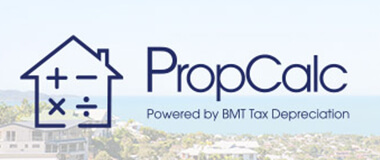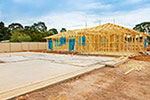Be super aware
Self Managed Super Funds, property and depreciation
Over the past six years, the total number of Self Managed Super Funds (SMSFs) in Australia grew from 399,474 to 509,992 according to statistics from the Australian Taxation Office (ATO).
Those who elect to put their superannuation into a SMSF gain more control over where their retirement funds are being invested because they, as members, become a trustee. Trustees of SMSFs can choose to invest in almost any investment product, subject to restrictions set by the ATO and the Superannuation Industry Supervision (SIS) Act.
In September 2007, amendments were inserted into the SIS Act 1993 which enabled the trustees of a SMSF to set up a structure allowing them to borrow money in order to invest in real estate. As a result, over the past few years BMT Tax Depreciation has experienced a significant increase in the number of tax depreciation schedule requests from SMSFs.
A number of requirements surround this new legislation. One of the most important rules a property investor should note is that all transactions within a SMSF must be made and maintained at a distance. For example, if a SMSF owns residential properties, the trustee will not be able to personally rent them. The ATO sees this as a personal benefit. However, if a SMSF owns commercial properties, a trustee’s business may rent the premises provided the corporation pays what is seen to be a fair market value rent.
Claiming depreciation for SMSF properties
There are tax implications when the trustees of a SMSF choose to invest in real estate.
As with any other property investment, SMSF trustees who invest in real estate are entitled to a capital works deduction for the wear and tear on a building’s structure and also for the depreciation of all plant and equipment items contained inside and outside the property.
Case study
In the following example, a SMSF owns a two bedroom apartment purchased for $620,000 with a rental income of $650 per week, resulting in a total income of $33,800 per annum.
Expenses for the property such as interest rates, management fees and holding costs totalled $41,724. Therefore the SMSF has a tax deductible loss for this residential property of $7,924 prior to lodging their tax assessment. The tables below show the difference claiming depreciation will make to a property owned in a SMSF.

The depreciation estimates in the above case study have been calculated using the diminishing value method of depreciation, are based on a tax rate of 15% and are based on a claim for a property held for a full twelve month period. The reduced tax liability occurs assuming there is additional income generated within the super fund.
Without claiming depreciation, the SMSF is only able to claim $7,924 and reduce the fund’s tax liability by just $1,189, resulting in a negative cash position of -$130 per week. A typical two bedroom apartment would expect around $15,500 in depreciation available in the first full year. By claiming $15,500 in depreciation, the total deductible loss is increased to $23,424. By claiming the 15 per cent on the total deductible loss of $23,424, the SMSF’s tax liability will be reduced by $3,514, thereby adding $2,325 to the retirement fund in the first year.
It is important that SMSF trustees always take advantage of the additional funds available via a depreciation claim. BMT Tax Depreciation advises any SMSF trustees who are considering investing in property to always seek the advice of an Accountant and to consult with a specialist Quantity Surveyor to find out how much depreciation can be applied to their SMSF investment property.





























